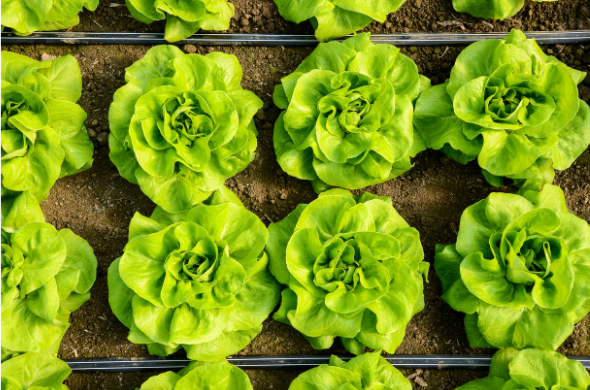How to Grow Lettuce in Your Home Garden
•Posted on December 17 2021

Lettuce is a popular leafy green that anyone can quickly grow in containers and garden beds. The ideal time to harvest lettuce is during the autumn or spring seasons, though you can grow it in cold weather months like December and January if weather conditions allow.
Buying lettuce and other greens at the supermarket can be costly depending on how much you eat. A wise investment to make is planting them rather than purchasing them. Here's is how to grow lettuce.
When to Grow Lettuce

There are different types of lettuce, including romaine, crisphead, loose-leaf, and red-leaf.
The crop thrives in cool weather. While spring is a prime time to grow just about anything, you can also plant lettuce in the winter if your soil temperature is above 50 degrees. when the soil is ready to be worked on.
Hot temperatures and long daylight hours can lead to lettuce bolting, challenging the plant growing.
What Types of Lettuce Exist?

Arugula: It's peppery-flavored green that originated from the Mediterranean. Arugula is rich in fat-soluble Vitamin K essential for bone metabolism and blood clotting. One can use it in dinner dishes, pizzas, and salads.
Dandelion Greens: Some people may not like the dandelion's bitter flavor, but it's strong and can pair with vinegary dressings. Dandelion greens can also make tea.
Batavia Lettuce: This can tolerate warmer weather than many types of lettuce. Even with increased temperatures, Batavia doesn't bolt and remains crisp.
Romaine: It's characterized by crunchy, thick white midribs and long, sturdy leaves. Romaine lettuce is reputable for its dark green leaves with antioxidants.
Iceberg Lettuce: This type of lettuce has subdued flavor, crisp texture, and is affordable and can be found at a grocery store in many pre-mixed salads.
Watercress: It has dark green leaves. Like arugula, watercress has a peppery, refreshing flavor. Watercress has an edible fibrous stem, but it's best before it matures.
What Methods Can Someone Use to Grow Lettuce?
Hydroponics

Hydroponic lettuce growing means utilizing nutrient-rich water rather than soil.
The farmer needs to maintain and manage the nutrients at an ideal level to ensure the lettuce can thrive—this type of farming side-steps many disadvantages of traditional farming.
Factors to consider in hydroponic farming include freshwater, oxygen, root support, nutrients, and light.
Soil Grown

Lettuce thrives best when planted on loose, cool soil with optimal drainage. There's also the need to add organic materials like manure or compost.
These are critical for providing essential nutrients, improving lettuce growing, and enhancing drainage.
Container Grown Lettuce

Growing lettuce in containers is widespread, especially for individuals who don't have enough space.
It can be a great way to start lettuce growing because it allows the farmer to place the pots indoors during freezing weather and leave them outside during early spring.
Lettuce thrives optimally in cool temperatures. Because of quick access, container growing can also help pests and weed control.
Where Should Lettuce Be Planted?

Typically, lettuce is a full-sun vegetable. It needs as much daylight as possible to germinate and grow more quickly.
However, it can also tolerate partial shade, which can be beneficial, especially during warmer weather.
What Nutrients Do Lettuce Plants Need?
For optimal growth, lettuce requires potassium (K), phosphorous (P), and nitrogen (N). An ideal fertilizer for lettuce growth should contain these nutrients.
Purchase the Right Fertilizer for Your Lettuce
As a lettuce farmer, it's vital to use the right fertilizer.
Our lettuce 8-15-36 fertilizer is specially formulated with chelated micronutrients and proper ratios of macronutrients necessary for healthy lettuce and leafy greens. It's water-soluble and heavy metal-free.
Buy today and allow your lettuce to thrive.
Related Posts:
- 6 Frost Tolerant Vegetables You'll Want in Your Garden
- 9 Plants Perfect for Your Indoor Garden This Winter
- What is the Best Fertilizer for Lettuce?
Comments
0 Comments
Leave a Comment